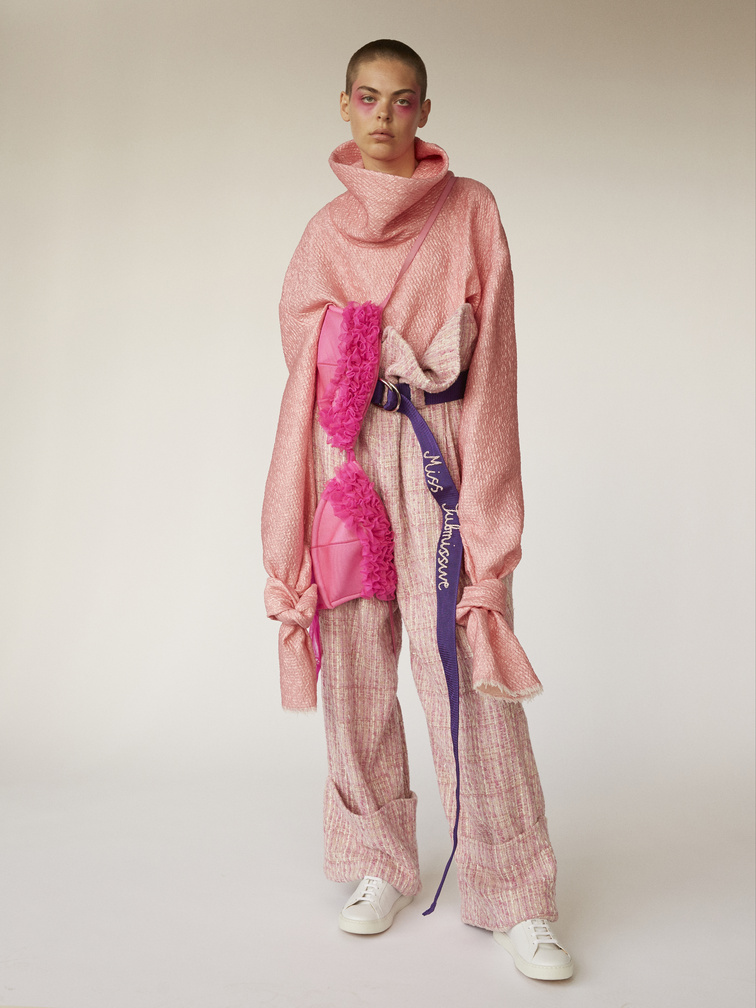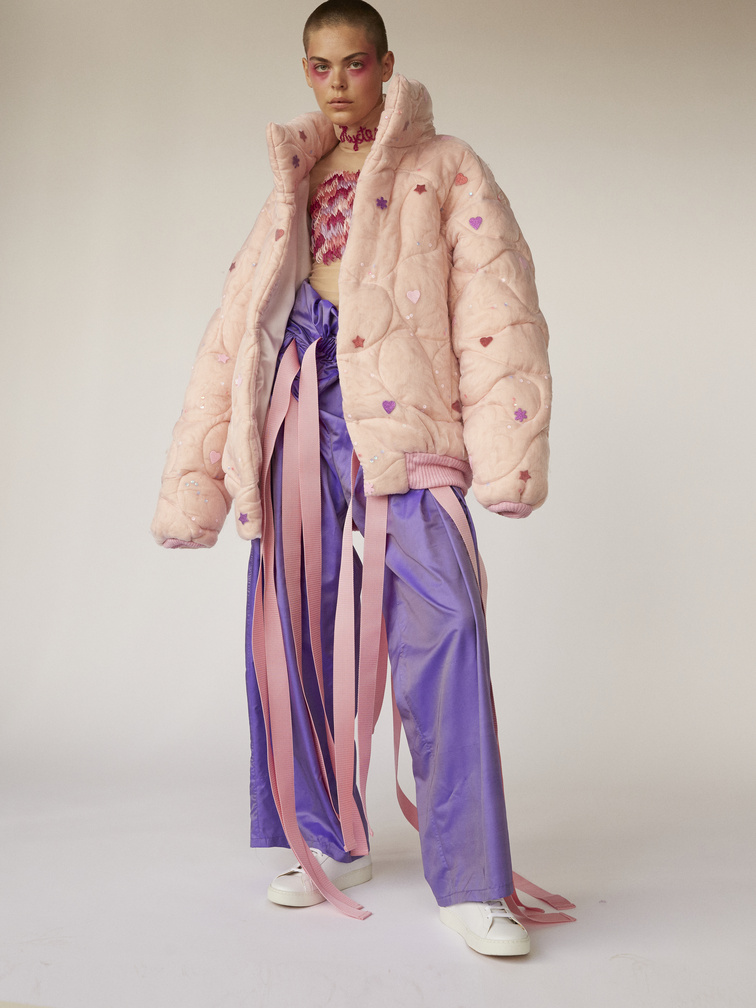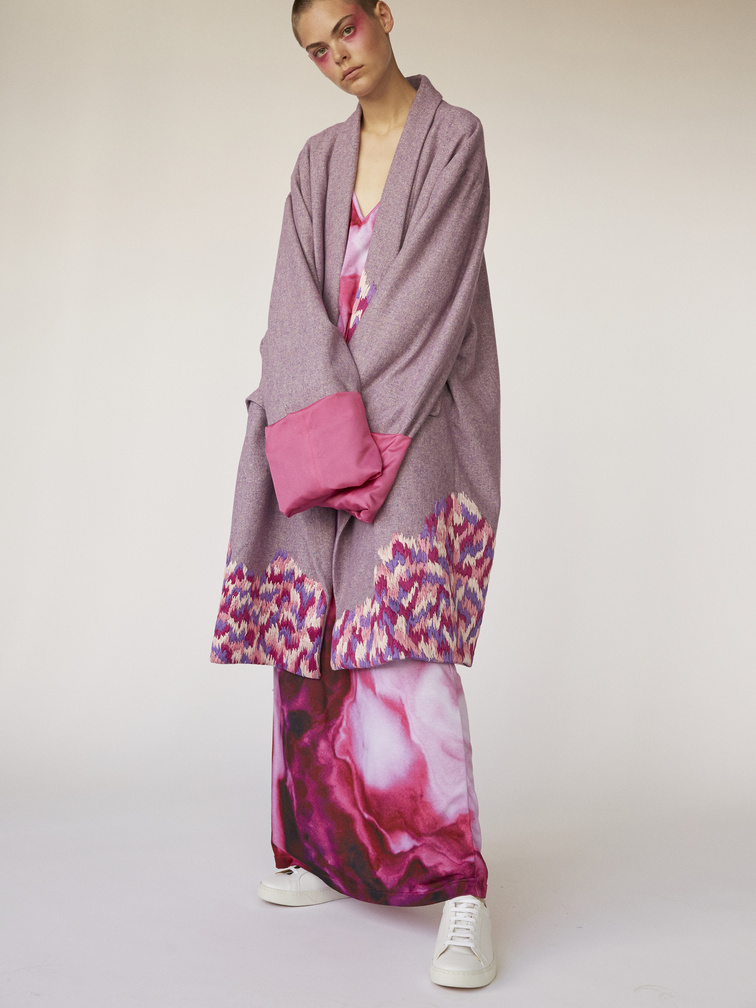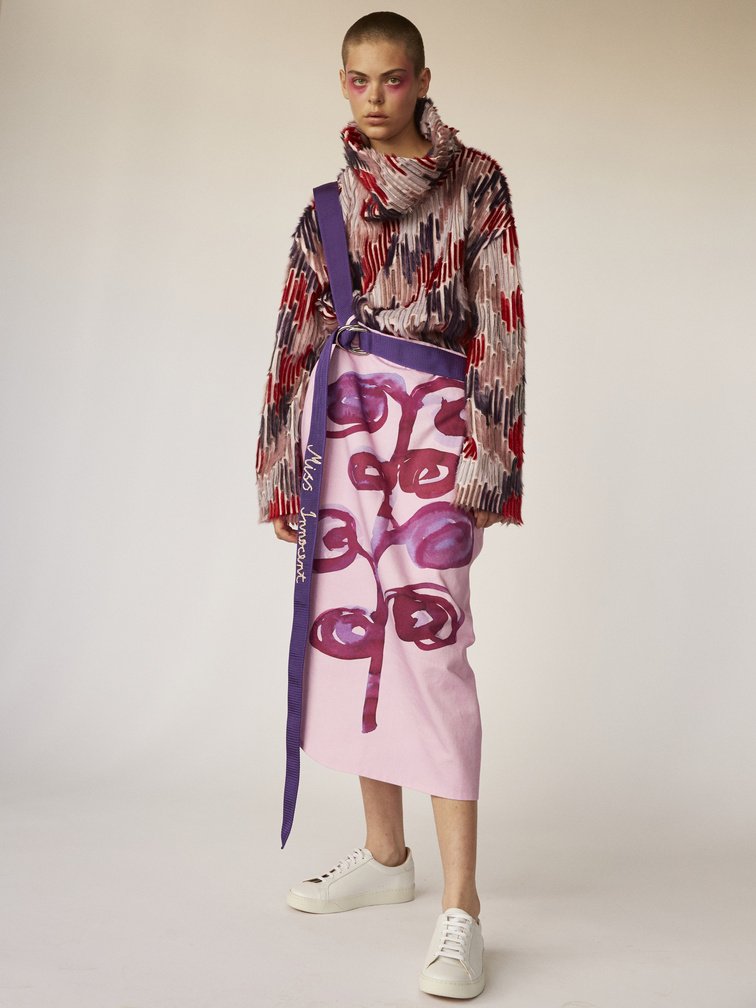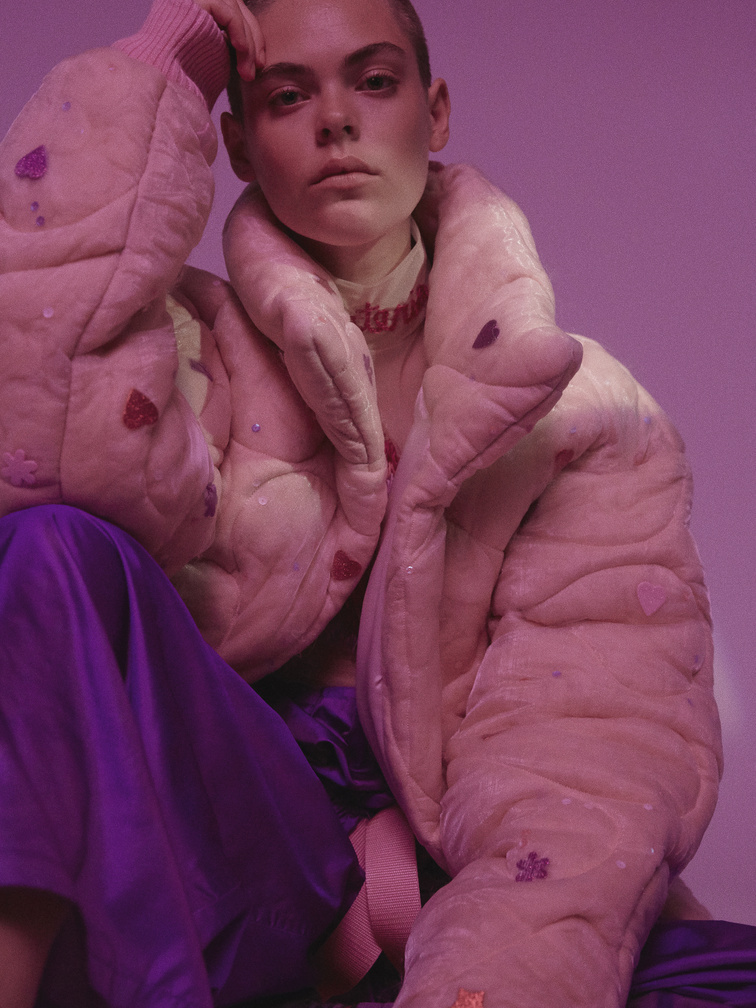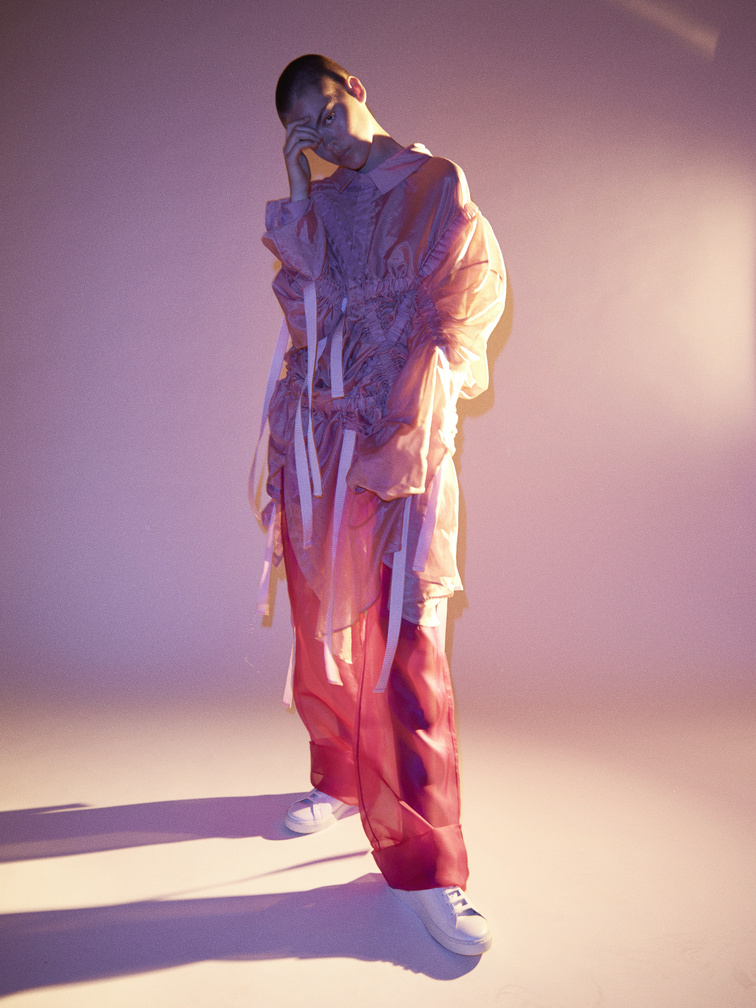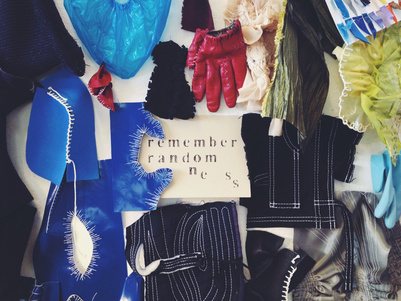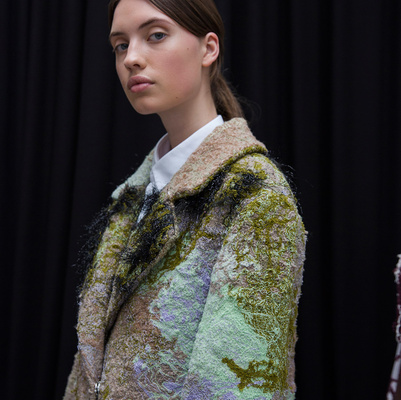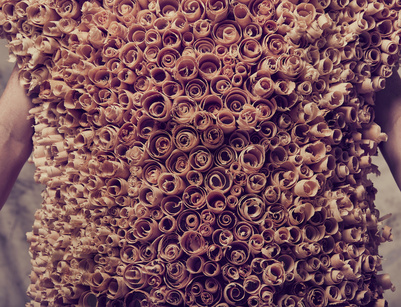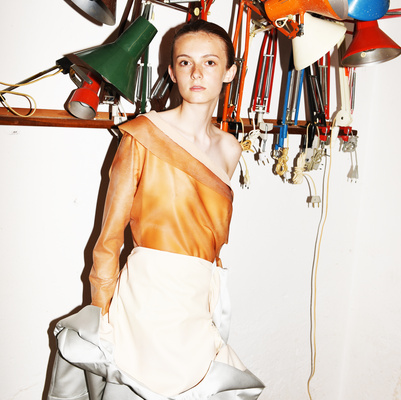HYSTERIA

My graduation collection, which is titled Hysteria, is an exploration of modern femininity, female stereotypes and the gendered upbringing of girls. It explores and reveals the emotional tension of being seen as the lesser gender and the social rules women and girls have to follow each day.
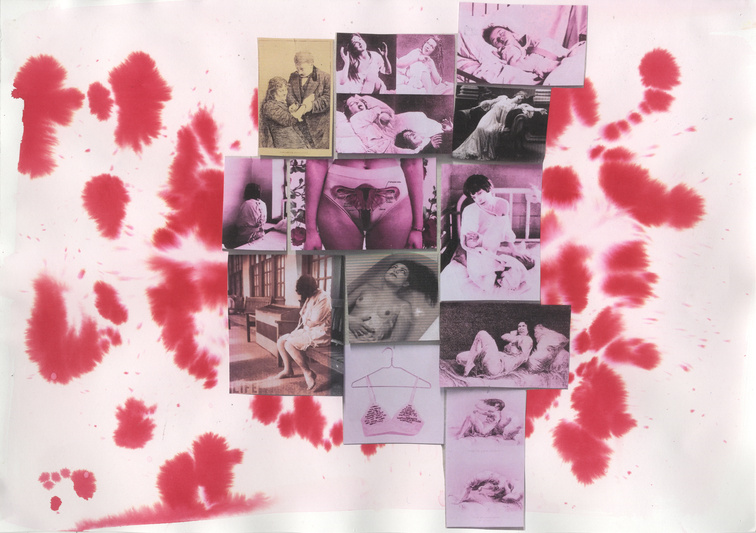
Hysteria is a now outdated medical term used for emotionally and physically ill women. The term was used for all kinds of symptoms and sicknesses and women were actually thought to be sick because they were female. Their wombs were wreaking havoc on their systems and their hormones causing all kinds of trouble. Rather than find out what was actually wrong with these women, doctors used all kinds of ridiculous and inhumane treatments to cure them of this made up illness of being female.
I wanted to work with the emotional tension of being female, of not being listened to or taken seriously, of not being heard and never being seen as equal, of being put in a pink box and told to be quiet, polite and submissive. I started researching the process of being brought up as a girl and what restrictions and rules young girls have to follow and the pink and glittery world into which they are most born.
The collection itself reflects on the moment a young girl tries on her mother’s clothes and thus finds herself embodied in modern femininity. But it is too much for her, the clothes are heavy and too big and she is overwhelmed with the social pressures of being female. She is drowning in femininity.
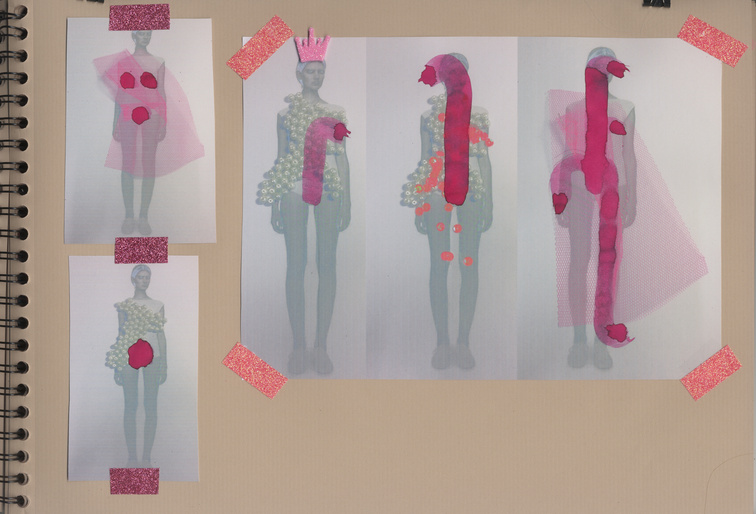
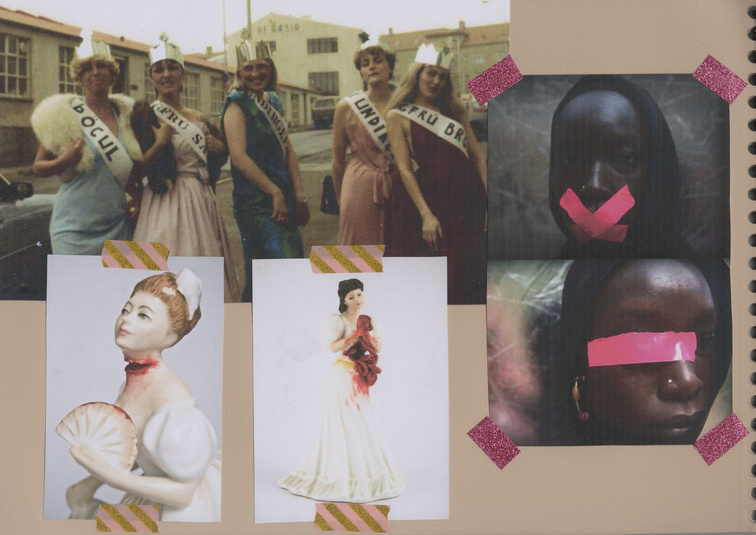
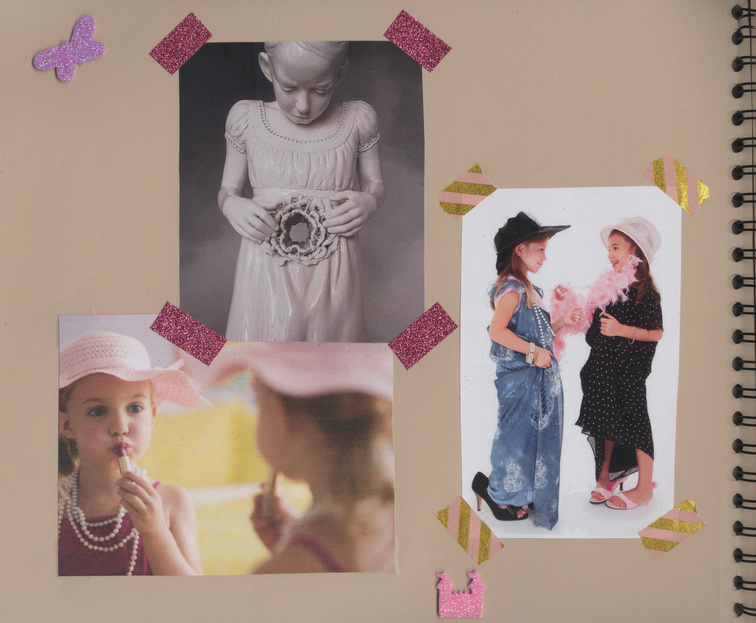
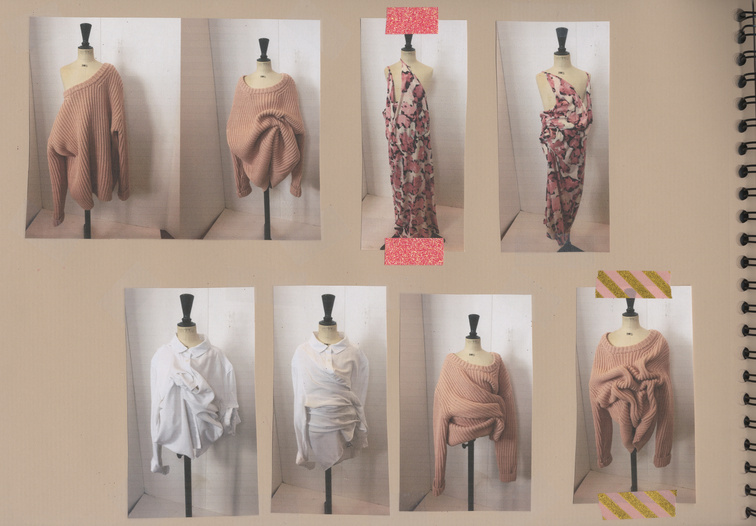
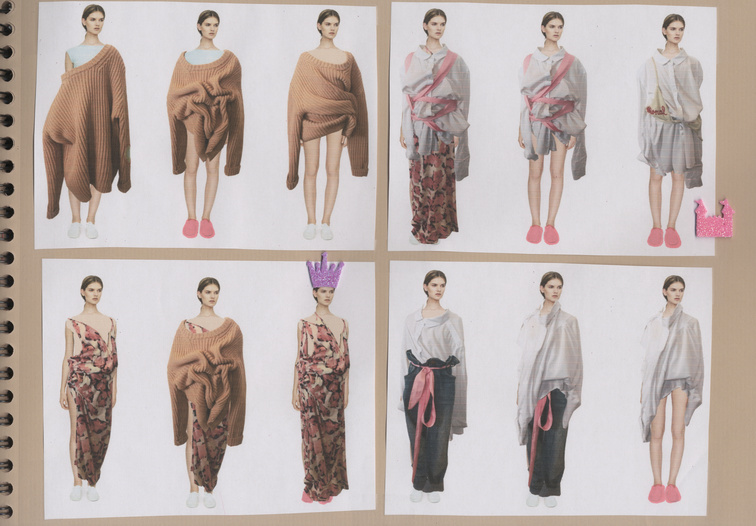
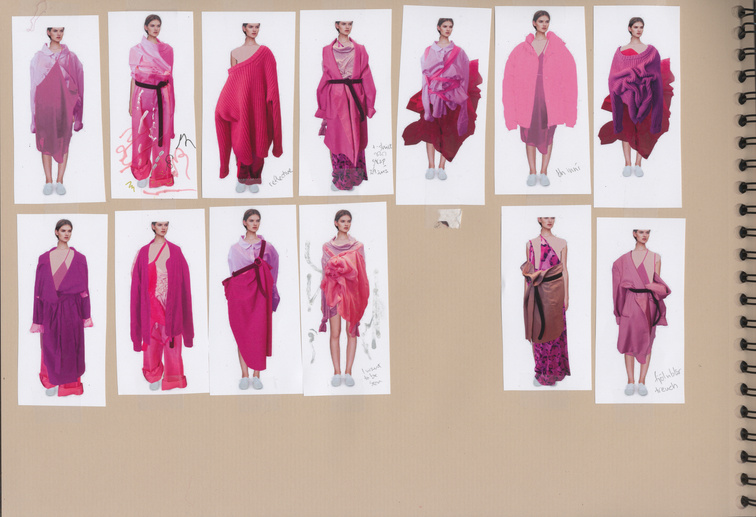
I used mostly experiments in my design process, where I tried out different design elements inspired by my theme. I tried creating textiles reflecting on emotional tension and the feeling of being somehow wrung-up. I used drawstrings and gathers and created a knit technique where I pull up loops to form an uneven and tense surface. I embroidered onto fabric in an intuitive pattern and made the embroidery as it was flowing over the surface of the garments. I liked working with these traditional female crafts, knit and embroidery, and using them for something untraditional. I found my silhouette by draping my own clothing on a children’s mannequin and seeing what happened when the clothes were too big for the body wearing them.
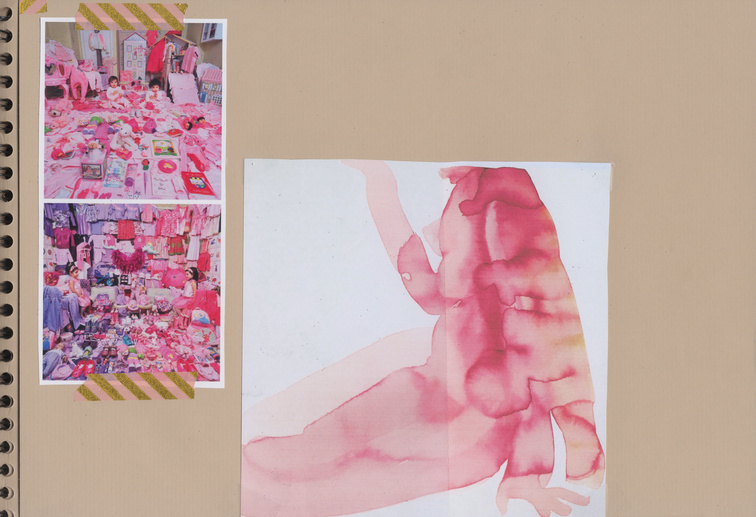
When I was printing out my first inspiration, images of hysterical women in insane asylums, my printer suddernly ran out of ink and the pictures all became pink, creating this oddly dreamy but still quite violent effect. I thought it fitted perfectly; Women's problems are pink problems, not worthy of attention and study. I wanted to work with the whole pink color scale and overwhelme my collection with it, both to study the color in a different context, but also to call out this ridiculous tradition that pink is only for girls and that girls should always be in pink.
